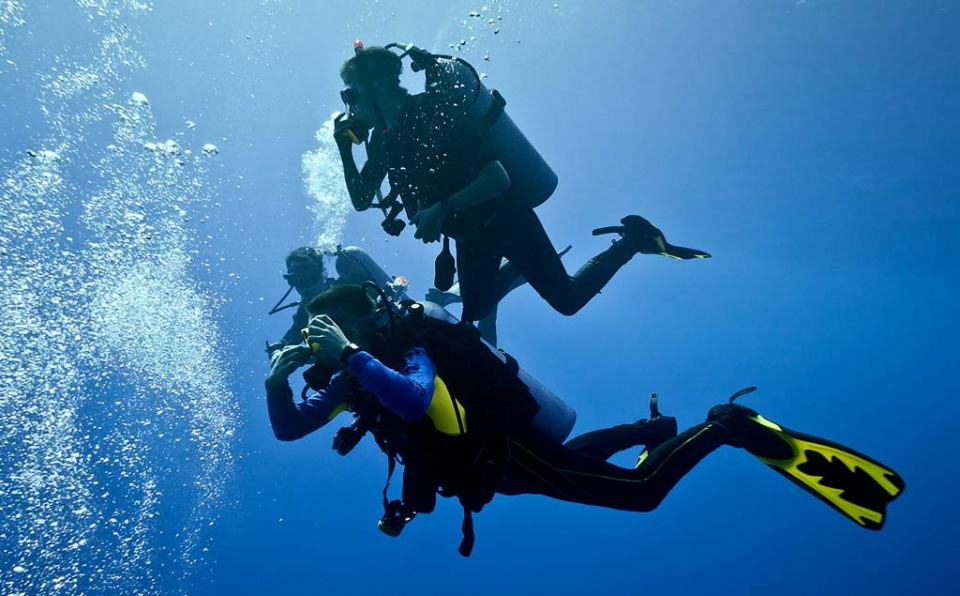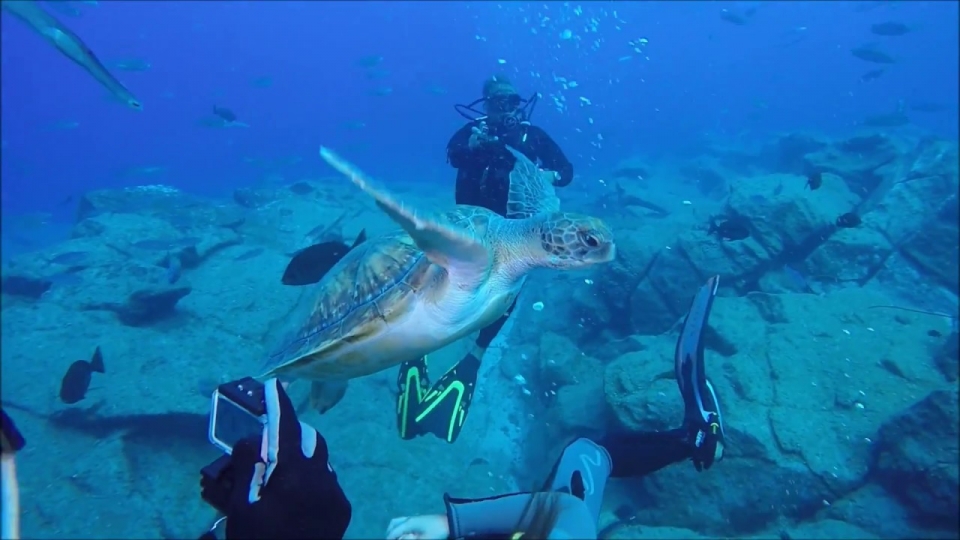1. Puertito de Armeñime
This is a secluded small bay on the Costa Adeje, frequently used for introductory dives. Puertito de Armeñime is a cluster of houses with an arched beach nestled in the middle of the bay.

The waters are calm and crystal-clear, shallow, and offer the chance to spot large sea turtles. The dive is very straightforward and can be done directly from El Puertito beach or from a boat.
2. Garachico
If you want to dive and the weather permits, don’t hesitate to head to Garachico. If the sea is rough, it’s best to postpone your dive for another day.
The Garachico Tunnel is the most distinctive feature of the area—a volcanic tunnel formed by eruptions over time.

At around 13 metres deep, there’s an opening in the rock. The descent is vertical, reaching depths of 20 metres. Then, the tunnel becomes horizontal, revealing its diverse marine life. Upon exiting, you can explore the surroundings, including a basalt arch. This area is also home to the Cueva del Roque.
3. Tabaiba Wreck
Tabaiba is located near the Port of Santa Cruz, an ideal spot for wreck diving. The Tabaiba wreck is a sunken ship at 25 metres deep, known as El Peñón. It was deliberately sunk in 2006 to enrich marine life, promote diving, and create an attractive dive site.

Access to the interior is easy, making it suitable for divers of all levels. Inside the wreck, you’ll find abundant marine life, including barracudas, octopuses, trumpetfish, and moray eels.
4. La Catedral
On Tenerife’s north coast, near Puerto de la Cruz, lies La Catedral. Its dives are the most famous on the island.
La Catedral is a rocky ridge with basaltic arches, vaults, and a 20-metre-high cave inside. This volcanic structure has all the features of an underwater cathedral.

This dive is suitable only for advanced divers due to its depth. The main dive goes down to 20 metres, while the boldest divers descend along walls to 40 metres. During the dive, you’ll be amazed by the abundance of marine life, including gorgonian gardens, lobsters in the dark, and moray eels.
5. Punta Rasca Lighthouse
Between Los Cristianos and Las Galletas lies the Punta Rasca Lighthouse, one of the best diving spots in the south of the island.
The dive is suitable for all levels, with different routes catering to each diver. On the seabed, you’ll encounter various fish species, such as rays and pufferfish, along with numerous arches, tunnels, and easily accessible caves.

More experienced divers can descend to 50 metres to explore the hidden rocky ridges. However, you don’t need to go that deep to admire the coral forests and caves teeming with marine species and crustaceans.
6. Montaña Amarilla
Montaña Amarilla is a yellow volcanic ash dune located in the Costa del Silencio. The dive starts from Las Galletas Marina, with the anchor point at Montaña Amarilla. With depths of 15 to 25 metres, this dive is suitable for all levels.

The mountain rises from the coast and continues underwater, where volcanic erosion has created unique shapes and reefs. You’ll find diverse marine life, including eels, lobsters, crabs, trumpetfish, and more.
7. El Bufadero
Located near the Port of Los Cristianos in southern Tenerife, the highlight of diving at El Bufadero is swimming with turtles. The dive is easy and suitable for all levels.

The dive begins with anchoring on a rocky seabed at 10 metres, where the adventure starts. You’ll spot turtles and plenty of rays, which often approach divers.











